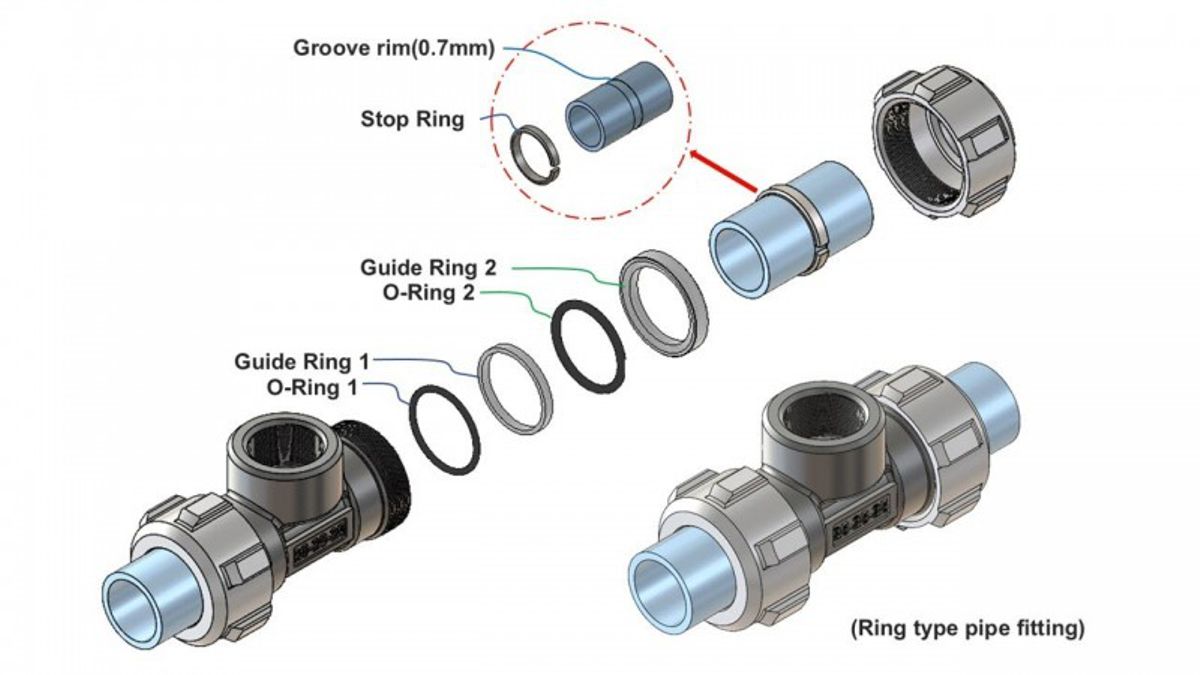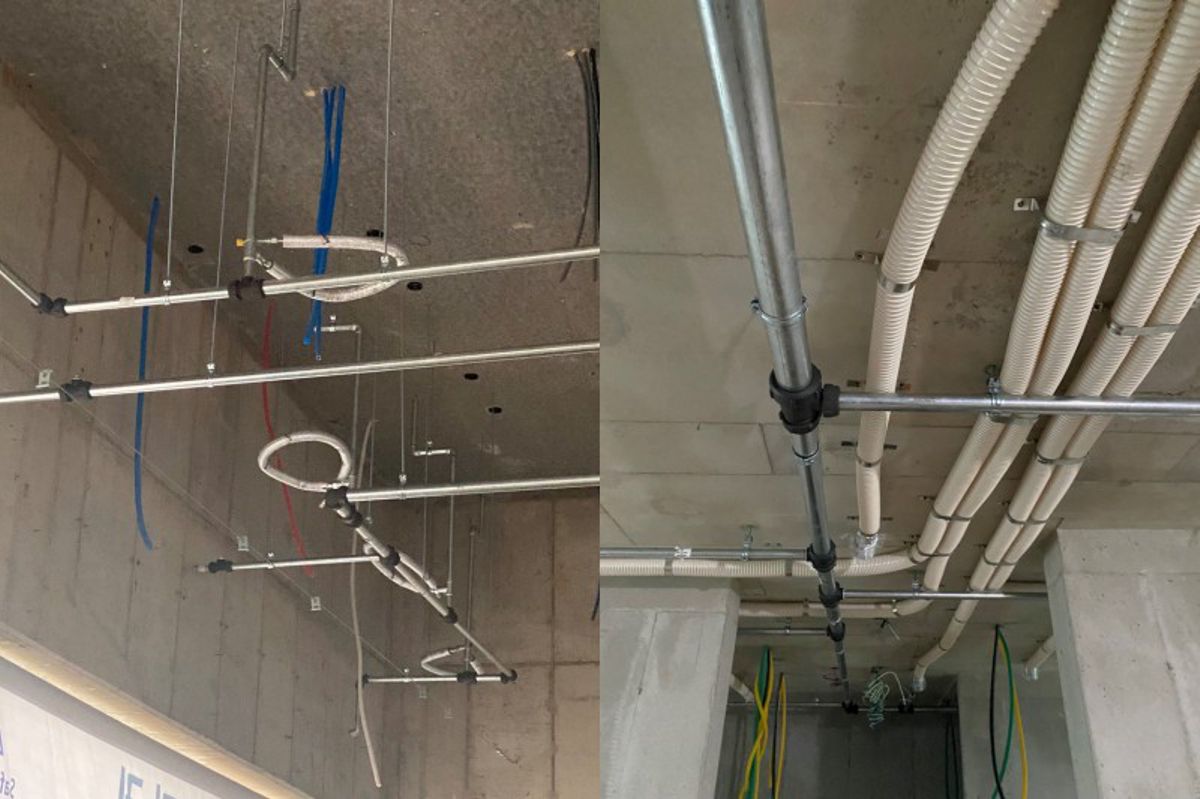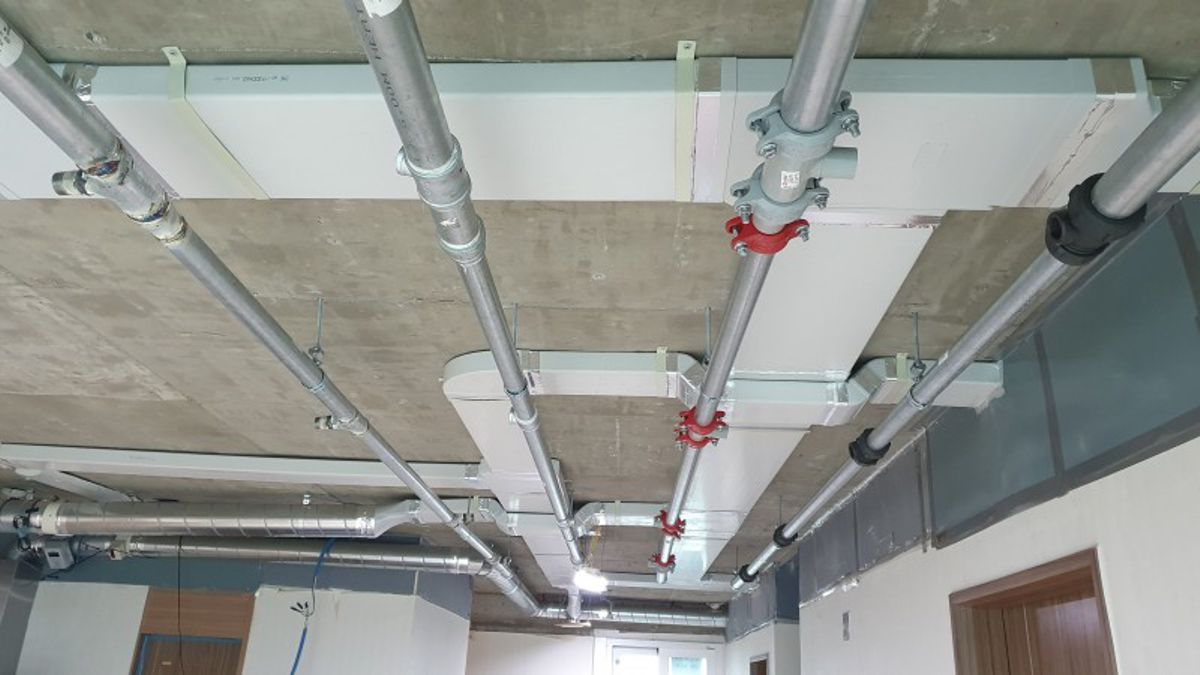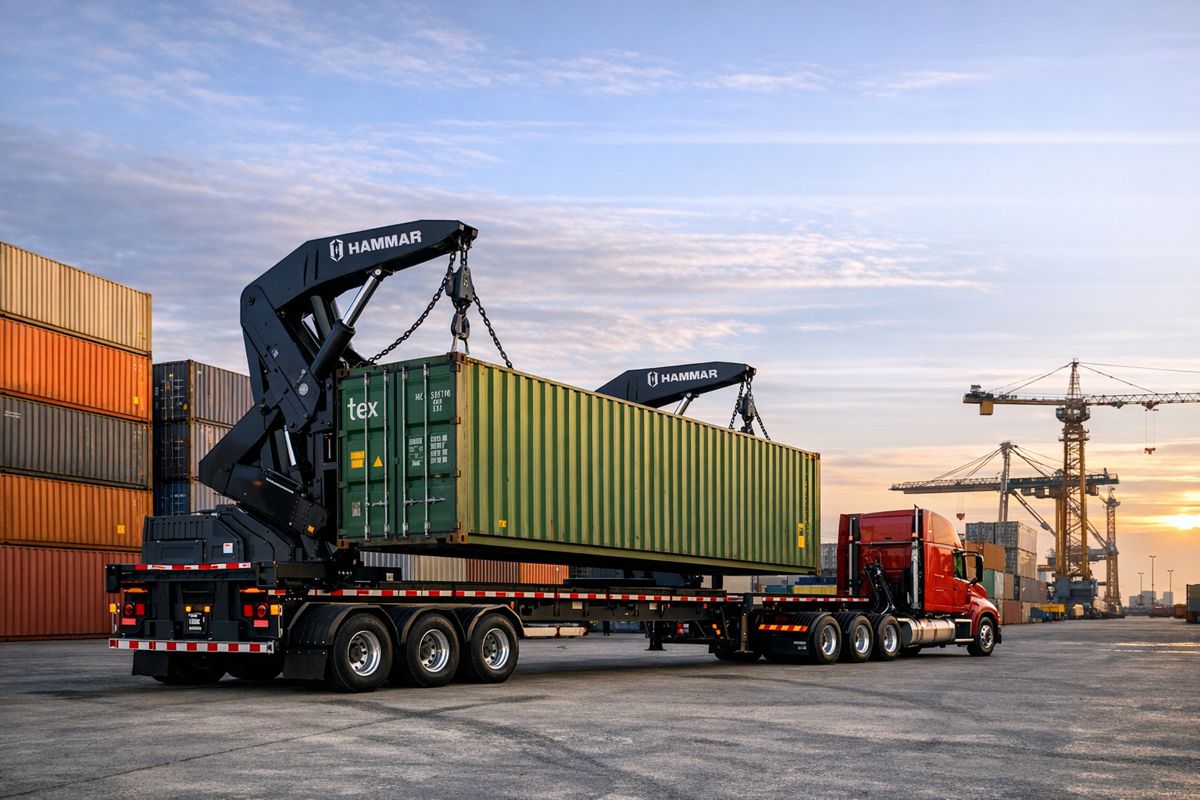New Weldless Pipe Joint System uses Ring Type Pipe Fittings
Korea Institute of Civil Engineering and Building Technology (KICT) has developed a novel non-welded ring-type pipe fitting system to address leakage and corrosion issues in sprinkler pipe connections. This system is the first of its kind in South Korea and aims to enhance fire prevention and early suppression.
According to the “Fire Facility Installation and Management Act,” all buildings constructed since 2018 with six or more floors, especially apartment ceilings, must have sprinkler systems installed. Approximately 17 sprinkler heads are needed per unit of 85-square-meter apartment, resulting in around 80 connections for the piping system.
In a complex with 1,000 units, this translates to approximately 80,000 required pipe connections. However, during the installation process, welding, cutting, and grinding are necessary for the sprinkler piping system, posing fire risks due to sparks. Additionally, post-installation, there is a risk of leaks caused by corrosion in the pipe connections.
The use of steel pipes in sprinkler fire protection systems can lead to corrosion over time, potentially compromising the system’s effectiveness. This issue poses a serious threat to the safety of firefighter and the public during emergencies. In fact, incidents related to corroded fire protection piping continue to occur nationwide.

According to data presented during a seminar at the South Korean National Assembly urging the resolution of fire protection system corrosion issues in September 2023, out of 124 incidents of malfunctioning sprinkler systems between 2016 and 2021, 69 cases (56%) failed to suppress fires due to corrosion-related inspection deficiencies. This highlights the critical importance of addressing corrosion in fire protection piping systems to ensure public safety during emergencies.
Until now, fire protection piping systems using steel pipes have primarily employed welded joints, threaded joints, and groove joints. According to the Ministry of the Interior and Safety, between 2015 and 2019, there were an average of 486 welding-related fires at construction sites each month, excluding the monsoon season. However, this trend has decreased significantly since the implementation of the Major Disasters Punishment Act. Threaded joints, which involve screwing connections, pose a high risk of leaks due to corrosion. Groove joints, on the other hand, are not used in smaller pipes (with diameters below 50 mm) due to the difficulty of creating grooves in the piping.
The research team led by Dr. Cho Dong-Woo at the Department of Building Energy Research of KICT, collaborated with Taiyang HighTech Co Ltd and Hanil Multidisciplinary Engineering Company, has developed an innovative non-welded ring-type pipe joint system.

This system allows convenient connection of pipes using a metal ring inserted into an outer groove on the pipe. By adding two O-rings and a guide ring, the joint is sealed within a housing, effectively preventing leaks. Notably, this system maintains the pipe’s structural integrity without any physical alterations to the inner surface, ensuring both water-tightness and corrosion resistance. Compared to traditional methods involving welding or threaded connections, this approach reduces assembly time and minimizes maintenance costs, making it suitable for various applications, including fire sprinkler systems.
Compared to conventional methods, the ring-type joint (RTJ) pipe fitting system offers distinct advantages in terms of functionality, durability, and ease of assembly. In this system, pipe sections and joint components are pre-assembled at the factory and packaged as a single unit. On-site installation involves straightforward assembly without welding or threading. Notably, when connecting larger pipes to smaller ones (e.g., 65 mm to 50 mm or 50 mm to 40 mm), the integrated reducer significantly reduces assembly connections by approximately 20% compared to welding or threaded methods.
This technology is especially efficient for installing sprinkler systems in apartment ceilings, where it can reduce labour time by up to 50% compared to traditional approaches. Additionally, the system’s corrosion-resistant design ensures long-term durability, minimizing maintenance costs related to leaks or pipe replacements.

The ring-type pipe joint system has passed various safety performance tests, including seismic performance and leakage performance, and in December 2022, it also obtained UL (Underwriters Laboratory) certification, an international recognized standard.
The developed technology has been installed in all units of an apartment complex with 3,000 households, and is currently being applied to public facilities in three apartment complexes. It is expected to be utilized in various applications, including high-rise apartments, modular homes, multi-use facilities, data centres, and cooling water or gas plant piping equipment.
Dr. Cho, said: “KICT continuously supports projects to enhance the technological capabilities of small and medium-sized enterprises. Through this, the developed technology can minimize fire damage by addressing corrosion and leakage issues in sprinkler pipe connections, contributing to public safety.”



















